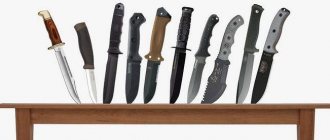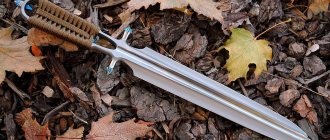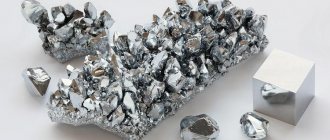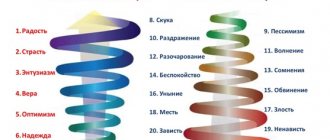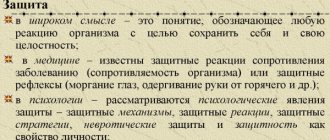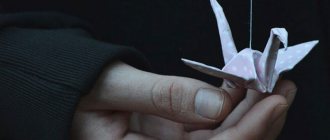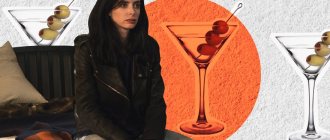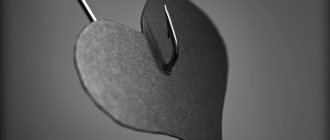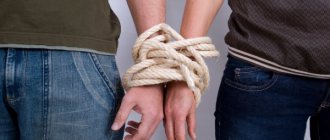Knives are the oldest tools created by man and have had a significant impact on the development of many civilizations. To this day, they are indispensable for performing many household and professional tasks. Their diversity is truly amazing; there are different types of knives for certain types of work. However, they all need sharpening. If you do not sharpen the blade for a long time, it will begin to dull and lose all its cutting properties. To ensure efficiency, it is necessary to provide for timely sharpening of tools and maintain the correct sharpening angles of knives depending on their purpose.
Sharpening features
During the manufacturing process, based on the professional goals and purpose of the tool, a certain blade shape, thickness parameters and inclination of the cutting edges are selected. It is thanks to the correct inclination of the angles and position of the blade that the most stubborn textures can be processed, since the correctness of the cut is ensured only if certain working positions of the tools are observed.
Optimal knife sharpening angles require maximum pressure on the cutting materials during operation. If the tilt changes, the blades can easily be damaged. It is important to note here that each blade model needs to be sharpened with strict adherence to certain angles. Based on what design features the knife has and what use it is intended for, the optimal sharpening angles are determined.
At the same time, it is undesirable to process some types of professional or chef’s tools (Tramontina and Lansky) yourself; this should be done by a qualified person using special equipment so as not to damage the blade.
Musaty
These are special tools for finishing the cutting edges of knives. It is with their help that the final finishing of the protrusions is carried out after sharpening with abrasives.
They not only come in different designs, but are also made from different materials.
In conclusion, we offer you the easiest way to sharpen knives at home, which can sometimes be used to sharpen a not-so-killed knife:
We recommend other articles on the topic
Electronic roulette, laser - device review, application, selection
Hand drill for excavation work - do it yourself
Vernier caliper - device, how to use the tool, photo
Choose a paint sprayer or make your own sprayer
What is the sharpening angle of a knife
Often, this value is rarely indicated in the technical specifications for a particular tool when purchasing it, although it is one of the important criteria that affects the cutting property of the tool. The lack of relevant information may cause some difficulty for the owner in understanding at what angle to subsequently sharpen the tool. To avoid this, you can use the table below for sharpening angles of knives. However, before that, let's figure out what this value actually is.
The area where the slope on the blade smoothly meets the edges of the cutting edge is called the approach. The angles of convergence of the approach on the two sides of the knife blade are called the “sharpening angle.” Ideally, the blade may have no leads; in such cases, sharpening angles are called trigger angles. But instruments with such a design can be found quite rarely. These mainly include products such as professional Japanese kitchen knives.
The sharpening angles are directly responsible for the purpose and type of work for which the knife was created. The smaller the sharpening angle, the easier it is to cut and the knife becomes sharper, but it quickly becomes dull and needs to be sharpened again. The greater the sharpening angle, the more similar the blade becomes to an ax and the longer it keeps its sharpness.
Table of sharpening angles for different types of knives
In order to perform high-quality processing and maintenance of tools, it is necessary to maintain the basic sharpening angles of knives for various types of tasks with their use. To control the correct sharpening of corners, you can use a table that presents recommended values for various types of knives:
| Knife types | Sharpening angles |
| Dining rooms for serving | 55° — 60° |
| Kitchen household | 30° — 35° |
| Kitchen professional | 25° — 30° |
| Chefs professional | 20° — 25° |
| Cutting for fish | 25° |
| Cutting machines for meat and large fish | 30° |
| Vegetable cutters | 35° |
| Fruit | 10° — 15° |
| Cutting for root vegetables | 22° — 25° |
| Boning machines for meat | 25° — 30° |
| Chopping axes | 25° — 30° |
| Sirloin | 10° — 15° |
| Penknives | 20° — 25° |
| Tourist / hunting, priority is spiciness | 30° — 35° |
| Tourist / hunting, wear resistance is a priority | 40° — 45° |
| Shoe repair | 30° — 40° |
| Shoe cutting machines | 20° — 25° |
| Universal carpentry | 30° — 45° |
| Chopping (machete) | 45° — 60° |
Materials used for kitchen knives
The most common, frequently used and indispensable types of knives in the household are kitchen knives. In the home kitchen, various types of knives are used, it all depends on the hobbies and wishes of the owners. In professional kitchens in restaurants and cafes, the use of professional kitchen tools is practiced. Such sets are a whole range of blades that differ in design and functionality. They also differ depending on the material from which they are made.
Among the most common materials are the use of:
- Carbon steel. It is an iron and carbon alloy containing the addition of vanadium or manganese. Over time, the surface of such blades rusts and becomes stained.
- Of stainless steel. An alloy with iron, carbon and chromium, to which inclusions of molybdenum or nickel are added. Such blades must be constantly sharpened; after the metal becomes tarnished, the knife begins to become unusable.
- High carbon stainless steel. It is a combination of carbon and stainless steels, which contain vanadium additives, molybdenum, and cobalt. They have increased strength, the period of blade sharpness is increased.
- Damascus steel. It is a blacksmith forging, for which different types of metal are used, with a series of hard and soft alloys. The use of such material is expensive and is often in demand among professionals. Damascus is used to produce hunting knives, collectible blades and razors. Sharpening of such blades is carried out exclusively by hand along the blade.
- Titanium alloy. To produce this alloy, a titanium powder matrix and carbide inserts are sintered. For the longest possible period of time, it does not require sharpening, but such knives require careful use, which requires special skills in work and the availability of professional sharpening equipment.
- Zirconium alloy. It is a product made of hard mineral ceramics, which was subjected to dry pressing and firing. subjected to dry pressing and firing. They are sharp blades that do not dull for quite a long time, but their disadvantage is increased fragility and the need for special care and storage. Used for cutting soft products only. Sharpening is carried out using specialized tools.
To properly sharpen a knife, it is important to know what material was used to make it. The sharpening angle depends on these criteria. The harder the alloy, the smaller the angle should be. In addition, the hardness of the alloy is also affected by the method of sharpening the blade.
How to sharpen a shoe knife
Often, owners of such tools sharpen their shoe blades themselves. There are some specialists who take on such work, but it is a rather difficult process. And it takes a lot of time.
Sharpening a shoe knife.
Probably for this reason, many owners of such a cutter decide to sharpen it themselves. The process is quite interesting: a leather belt is glued onto a flat stick. Then it is rubbed with goyim paste. But this is at the next stage, initially it needs to be sharpened on a sharpener, which should have a white color, which will reduce the heating of the tool during sharpening.
The number of strokes on the sharpener should be no more than 10 and try not to lose the angle. And only then do we move on to the belt on the board, this is the final stage, polishing the blade. Sharpening a shoe knife is a special procedure, as it is quite difficult.
Self-sharpening
We have already touched on the sharpening order above. But let's try to briefly describe how this happens. All steps must be done very carefully:
- First, using a coarse abrasive, then a little finer, the knife is sharpened by selecting a notch. The notch thins the cutting edge.
- Then use a diamond wheel until a burr appears.
- And finally, it is polished on a leather belt with goyim paste.
Thus, in three stages you can ideally sharpen a shoemaker’s blade, the notch on one side is more convenient to use and the knife becomes flexible. Under no circumstances should you overheat it; the steel will become brittle.
The appearance of blackness is a bad sign. Be careful and attentive.
Blade shape
Knives are tools that combine two main elements - a blade and a handle. At the same time, the most important difference lies precisely in the design of the blades and the presence of components. The most important part that needs constant care and regular sharpening consists of:
- Cutting edge and its height.
- Butt and its thickness.
- Rectangular section and its height.
- Descents and their heights.
- Cutting edges, their heights.
- Thickness of cutting edges.
Most often, blades have the following blade shape:
1-5 - Wedge-shaped; 6 - Razor; 7 — Chisel (one-sided or Japanese); 8 — “Chopping Chinese”; 9 - Bullet-shaped.
The process of sharpening and sharpening a blade
The process of dulling blades occurs due to:
- Friction of the blade against food when cutting.
- Rough contact of the blade with the surface of inhomogeneous particles, when the blade falls or hits other objects.
- Asymmetrical lateral loads.
- Chemical oxidation of the material when exposed to acidic foods and greens.
Dull blades can be identified quite simply - by eye or by touching with your finger. To correct a dull edge, sharpening is performed.
The main task of sharpening is to restore the correct contours on the cutting edge of the tool and polish it to the required degree of smoothness.
The main difficulty of sharpening for an inexperienced person is maintaining the desired blade angle during processing. To make this easier, the use of special devices and devices for sharpening knives is practiced. Not only kitchen appliances need sharpening; often at home, the edges of straight razors, hairdressing or household scissors, and other tools also need to be sharpened. Compliance with the rules and the availability of tools necessary for sharpening them meet the requirements for knives.
Most often, sharpening stones are used to sharpen all such types of tools. They may differ in shape and structure because they are made from different types of materials. These can be mineral natural stones, polymer alloys, abrasive mixtures or ceramics. In the process of sharpening a blade on such abrasives, it is possible to set the required sharpening angle, but such work requires special skills.
Any sharpener that is made on the principle of pulling the blades through does not allow you to set the sharpening angles, so it is suitable only for short-term editing. At the same time, for certain types of knives their use is undesirable, since it can lead to damage to the edge of the blade.
Often, for finishing or light sharpening, musats are used - such handles with a round rod on which longitudinal ribs are cut. But sharpening with musat requires some skill, so sharpening may not work the first time when using it.
It is also possible to use electric sharpeners, but they are not intended for a regular kitchen knife.
It is not recommended to wash the surface of knives, razors, scissors and other metal blades with hot water or wash them in dishwashers. Such actions will help prevent rapid dulling and will keep the knives sharp for a long time.
Before the process of sharpening knives yourself, it is recommended that you familiarize yourself with the training video presented or take master classes from knowledgeable craftsmen. Remember that a good knife is a true work of art.
Hunting knife sharpening angle
It directly depends on what this knife is used for, and there cannot be a standard value here. If you use a knife, incl. to finish off a wounded animal, it is better to have a blade-shaped blade or at least a false blade on the non-working side.
If you use a knife as a cleaver, incl. for chopping wood, it is preferable to have a shape with inlets and bevels of at least 30°.
But the so-called blood flows are not performed for what gave them this name, but to make the knife lighter and better balanced. And it is better to sharpen such knives at home using devices, at least the ones shown in the video:
It is clear that the sharpening angle will be selected based on the height at which it will be installed.
By adjusting it, you can sharpen not only the cutting edge, but, most importantly for such knives, descents and approaches with a given angle.
There are shaped blades of hunting knives.
Their sharpening is done with special needle files and files.
